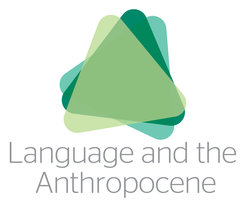Language and the Anthropocene
The Language and the Anthropocene research group is the successor to the former Eurasia3angle Group, headed by Martine Robbeets at the Max Planck Institute of Geoanthropology. The group works on late human prehistory, integrating archaeological, genetic and linguistic evidence to reconstruct various aspects of human evolution and culture. Special focus is on the languages of North and East Asia, the Transeurasian languages in particular.
Transeurasian

The term “Transeurasian” refers to a large group of geographically adjacent languages, stretching from the Pacific in the East to the Baltic and the Mediterranean in the West, that include up to five well-established linguistic families: Japonic, Koreanic, Tungusic, Mongolic, and Turkic. Although most linguists would agree that these languages are historically related, they disagree on the precise nature of this relationship: are all similarities generated by borrowing or are some residues of inheritance?
Although most linguists would agree that these languages are historically related, they disagree on the precise nature of this relationship: are all similarities generated by borrowing or are some residues of inheritance?
Key Objective

The origin and early dispersal of speakers of Transeurasian languages is among the most disputed issues of Eurasian population history. The Language in the Anthropocene research group addresses this question from an interdisciplinary perspective. Our key objective is to integrate linguistic, archaeological and genetic evidence in a single approach, for which we use the term “Triangulation”.
New questions are emerging from this classification: Who were the ancestral speakers of proto-Transeurasian? Where and when did these people originally live? When did the ancestral language separate into its main branches? What triggered the split? In which directions did the dispersals go? When and how did the languages reach their present locations?
Results so far

The Language in the Anthropocene research group is the successor to the former Eurasia3angle Group “Millet and beans, language and genes. The origin and dispersal of the Transeurasian family”, which was funded by an ERC Consolidator Grant from 2015 to 2021.
So far, we reported new, wide-ranging datasets from these disciplines, including the most comprehensive Transeurasian agropastoral and basic vocabulary presented to date, an archaeological database of 255 Neolithic and Bronze Age sites from Northeast Asia, and the first collection of ancient genomes from Korea, the Ryukyu islands and early cereal farmers in Japan, complementing previously published genomes from East Asia. Challenging the traditional ‘Pastoralist Hypothesis’, we showed that the common ancestry and primary dispersals of Transeurasian languages can be traced back to the first farmers moving across Northeast Asia from the Early Neolithic onwards, but that this shared heritage has been masked by extensive cultural interaction since the Bronze Age. By combining evidence from archaeology, genetics and linguistics, we showed that the early spread of Transeurasian speakers was driven by agriculture.




